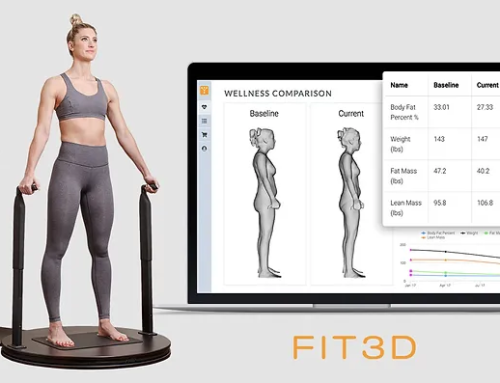 The importance of regular exercise can no longer be disputed. We know we need to move, and often, in order to maintain good health, but many people feel that once they’ve ticked off those hours at the gym, they’re home free. Yet the fact remains that health depends on a myriad of lifestyle factors, and this includes sedentarism. Americans spend more than half their waking hours sitting, whether while working, commuting, watching television, or gaming, and a recent study suggests this sitting habit could be killing us — yes, even the fitness enthusiasts among us.
The importance of regular exercise can no longer be disputed. We know we need to move, and often, in order to maintain good health, but many people feel that once they’ve ticked off those hours at the gym, they’re home free. Yet the fact remains that health depends on a myriad of lifestyle factors, and this includes sedentarism. Americans spend more than half their waking hours sitting, whether while working, commuting, watching television, or gaming, and a recent study suggests this sitting habit could be killing us — yes, even the fitness enthusiasts among us.
The report, published in the Annals of Internal Medicine, highlights the relationship between prolonged sitting and early mortality risk factors such as heart disease, diabetes, and cancer, concluding that “Prolonged sedentary time was independently associated with deleterious health outcomes regardless of physical activity.” In other words, even if you’re clocking in an hour of intense activity a day, if you’re still sitting for the rest of it, particularly without breaks, your heart health — and life — remain at risk. So while we often feel we can, quite literally, outrun and out-train bad habits or an unhealthy lifestyle, research is proving otherwise.
Sitting Ourselves to Death
Simply put, we are sitting ourselves to death. The American Heart Association estimates Americans spend six to eight hours sedentary per day, and author Marc Hamilton, Ph.D, who studies sedentarism, argues this figure is closer to nine hours. Beyond impeding our fat and sugar metabolism, both of which impact diabetes and heart disease risk (and therefore early mortality), sitting slows caloric burn by 30% compared to standing, making it a major culprit in the weight loss struggle.
It also impacts heart health by disrupting vascular function. Our bodies control blood pressure by dilating and constricting blood vessels, maintaining an important balance between these two states, but prolonged sitting disrupts this harmony. A study published in Experimental Physiology examined the effects of sitting for two three-hour periods on young girls, one period uninterrupted and the other broken up hourly by 10 minutes of moderate exercise, assessing the health of the main artery in the leg before and after each session. Researchers saw a 33% reduction in arterial dilation, or enlargement, after the uninterrupted period, but arterial health remained stable during the period with exercise breaks.
Medical literature has already established the link between prolonged sitting, limb artery health, and cardiovascular disease risk in adults, but it seems even children are not immune to this epidemic of the modern age.
Admittedly, sitting can be difficult to escape. Most jobs commonly require us to sit in front of computers throughout the day, and again in traffic getting to them, and we typically unwind after a long day by — you guessed it — more sitting. Fortunately, the dangers of sedentarism can be avoided without a complete lifestyle and career overhaul. With just a little mindful effort and planning, you can keep your body and mind healthy even while working at a computer. The following are just a few ways to incorporate more active breaks into your day.
Strategies for Mitigating the Risks of Prolonged Sitting
1. Set Walking Reminders or Download an Activity App
It takes time to build a new habit, and this includes remembering to get up and move around every hour. Take some of the pressure off by setting reminders on your phone or, better yet, downloading an app that offers exercise suggestions for your breaks.
2. Talk and Walk
With most people abandoning their landlines these days, there’s no reason to stay tethered to a chair while talking on the phone. Stand up or walk around instead — research shows you’ll project more energy and enthusiasm than you would while sitting, which might just translate into more effective business calls and improved relationships.
3. Drink More Water
Aside from the obvious health benefits of staying sufficiently hydrated, electing to drink more water will mean more trips to the water cooler — and bathroom — throughout the day.
4. Get in Some Face Time
Avoid the office worker trap of emailing your colleagues for every request — especially your nearest neighbors. If you need to speak to a coworker, get up and speak with them, face-to-face!
5. Use Several Workstations
If scheduling regular breaks seems like too much of a hassle, try alternating between sitting and standing desks. And this option doesn’t need to break the bank; a simple laptop stand (or even a stack of books) can transform your current desk from sitting to standing.
6. Take Stretch Breaks
Any movement that can stretch out the hips and strengthen your glutes and core — both of which weaken with sitting, which in turn leads to low back pain — will counteract some of damage from sitting. Clam shells, glute bridges, bird dogs, and leg swings are all good examples of no-equipment exercises you can do at the office.
Frequency Is the Key
It all comes down to frequency. The longer we sit for any given time, the more damage we do to our muscles and blood vessels, the less focused we become, and the longer it takes for our meals to digest. Rather than packing in all your activity before or after work, make movement a regular part of your day.





